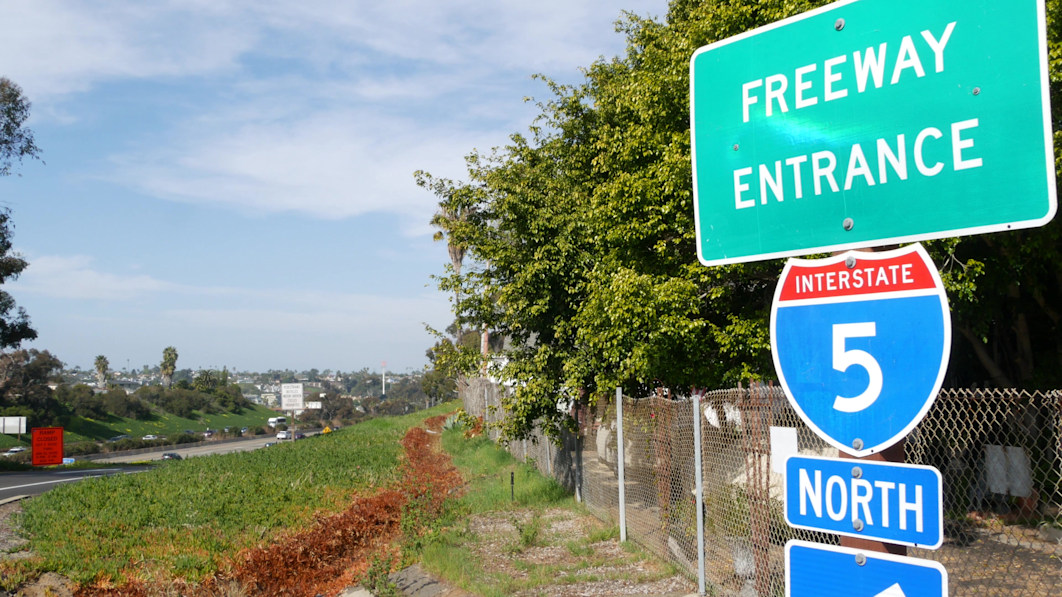Here are more cooperative driving habits from the experts

In my conversation with Dr. Bill Van Tassel, AAA manager of driver training programs, for my opinion piece on the zipper merge, the theme of “cooperative driving” cropped up again and again. The zipper merge is a situation where cooperation among drivers is key. Give drivers room to merge, make eye contact if you can. Wave them in or give a blink from your headlights to let them know it’s safe to move over in front of you. Be polite. Hell, maybe even smile (a lot to ask in stop-and-go traffic, I know).
But cooperative driving doesn’t stop once you’re out of a traffic jam. I asked Dr. Van Tassel if there are other cooperative driving habits people could employ to make the roads calmer and safer for everyone.
As a matter of practice, here are a couple of other cooperative driving techniques you can use to get in the mood for the zipper merge:
The ‘courtesy lane change’
Here, if someone is trying to merge onto the highway, first of all, be aware of them. Then, if you’ve got the space and grace to do so, move over into the next lane to give that car room to merge onto the highway. Traffic merging from an onramp can’t always match the speed and spatial flow of highway traffic. Sure, it’s generally on them to yield right-of-way, but things will be smoother and safer if you can move over to let them in.
This courtesy lane change is something I’d been practicing for as far back as I can remember, but it’s never something I’d heard a name put to, or even described as something drivers ought to do. It feels like second nature, but that might not be the case for everybody. Like with any other merge, this is all about giving people space, and space equals safety. Now that I know it’s an actual practice, I hope I’ll be even more mindful about other drivers entering the freeway, and be sure to lend them the room they need to join me in blissful cruising.
The ‘Dutch reach’
When you’re parked parallel to the roadway, instead of opening the driver-side door with your left hand, reach across your body with your right hand to grab the handle. It’s called the “Dutch reach.” This will help remind you to check over your shoulder for anyone — especially cyclists — that might be cruising along the road unaware that you’re about to swing a door into their path.
Even being aware of this situation and its “Dutch reach” mitigation technique, I’ve found it hard to remember. Dr. Van Tassel told me some people wrap a pipe cleaner around their door handle as a reminder, which I think is delightfully clever.
Move over for faster drivers
I think we’re finally starting to get this one as a driving culture. Stay to the right except to pass. Yes, even if you’re already breaking the speed limit. If someone wants to break it even more, let them.
In many places, like my home state of Michigan, this is also the law. I never like to see anyone pulled over, but I feel a lot less bad when those lights come on for a left lane hog.
And, because it bears repeating, the ‘zipper merge’
If you don’t want to read my whole sermon about the zipper merge, or late merge, here’s what you should do, and what you shouldn’t do, straight from AAA, which teaches the zipper merge in its driver education programs:
“Dos”
Remain in whichever lane you are in up to the merge point.
Take turns merging, like the teeth of a zipper.
One vehicle from the left lane, one vehicle from the right lane, one vehicle from the left lane, and so on.
Alternating like this smooths out the journey for everyone.
If you are in the lane that is ending, match the speed of the traffic in the other lane well before you get to the merge point.
Barreling up to the merge point at a higher rate of speed can make you look greedy and aggressive to other road users.
If that occurs, they may not leave you space to merge in to keep traffic moving smoothly.
“Don’ts”
Don’t merge too early out of the lane that is ending — wait until the merge point.
Don’t be a “Lane Shark” by blocking both the lanes, to punish what might look like “cheating”— zipper merging is not cheating; it’s faster for everyone!
Don’t tailgate the vehicle ahead. You will only have to slow down at the merge point, which causes a chain reaction of vehicles having to slow down all the way back up the line.
AAA also recommends these rules of the road be followed:
Make sure you keep enough space ahead of your vehicle (as with any time you drive).
No matter what, remain cool — either way, merging into a single lane will slow your progress a bit.
Successful use of the zipper merge requires collaborating with your fellow road users.
If another driver does not do the maneuver correctly, don’t sweat it — they just may have not heard about the zipper merge yet.
And here’s a helpful video form the Minnesota DOT:
Practice awareness. Practice cooperative driving. We’ll all be safer and happier for it.
Got other cooperative driving tips? Drop ‘em in the comments.
Related video:



